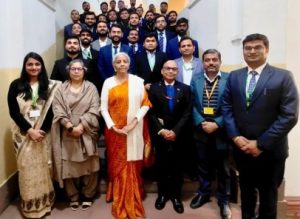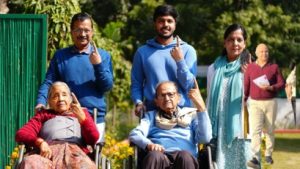Middle class sneaks in Modi govt’s vocabulary in election year
By Manish Anand
New Delhi, January 31: President Droupadi Murmu spoke of the vision of her government to work for a prosperous middle class. This month Prime Minister Narendra Modi had tasked the Bharatiya Janata Party (BJP) leaders to communicate hard with the middle class. Finance Minister Nirmala Sitharaman has been labouriously arguing that the government has created infrastructure for the benefit of the middle class.
Nine states are heading to the Assembly elections this year. India is known to have one of the largest middle class population next only to China. While the Indian middle class has daily earnings much less than their counterparts in China, the large population block has never been a political force to dictate electoral narrative for being divided on caste lines.
But the economic growth now struggling to stay above six per cent gross domestic product (GDP) mark is seemingly bringing concerns to the poll managers of the BJP. This explains the Modi government now going aggressive to argue the case that the ruling dispensation has catered to the aspirations of the middle class. This is on the back of perceived anguish at the government refusing to cut down the prices of petrol of diesel despite the crude oil sliding from the high of $128 per barrel to $80 per barrel.
President Murmu said: “India should be such a country, where there is no poverty, and whose middle class is also prosperous. India should be a country, whose youth power and women power stand at the forefront to give direction to society and the nation.” She was addressing the joint session of Parliament on Tuesday.
The Modi government has been seen to have taken an aggressive welfarism, adding to the subsidy burden with free foodgrains scheme, while the GST architecture is seen to have added additional tax burdens on the middle class. The Modi Budgets have mostly been about rural India, and growing doses of welfarism. The Chief Economic Advisor V Anantha Nageswaram, while speaking after the tabling of the Economic Survey, bared the economic thinking of the Modi government, as he talked of creating additional space for social measures within the constrained growth.
“While 145 medical colleges were opened in the country between 2004 and 2014, more than 260 medical colleges have been opened during the tenure of my government from 2014 to 2022. The number of graduate and postgraduate seats for medical students has now doubled in the country as compared to earlier period. While there were about 725 universities in the country before 2014, more than 300 new universities have been set up in the last eight years. More than 5000 colleges have also been opened in the country during this period,” President Murmu said in her speech.







